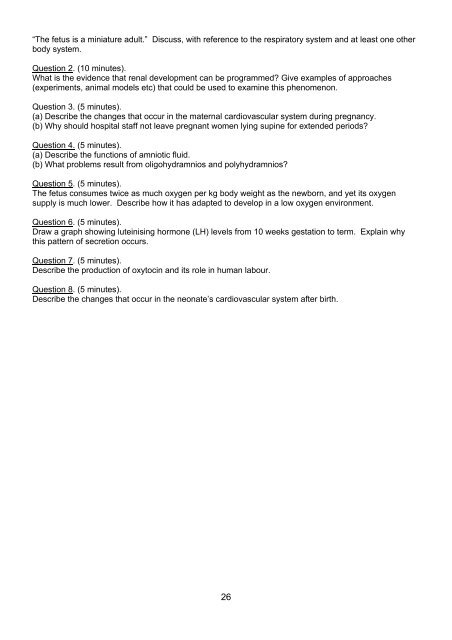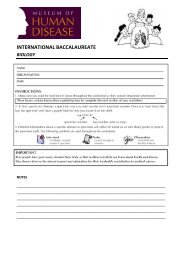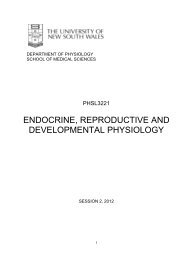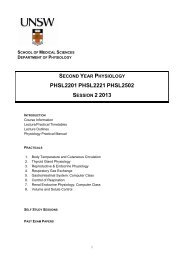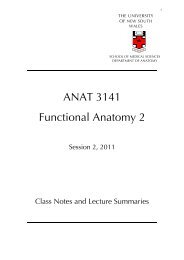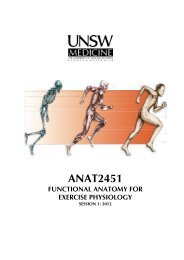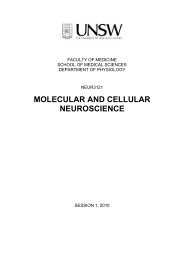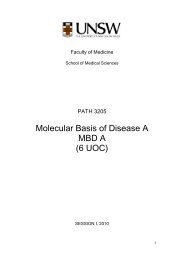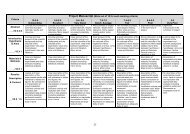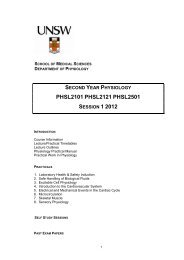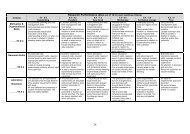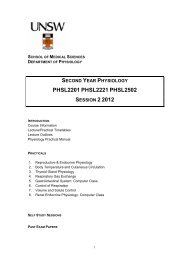endocrine, reproductive and developmental physiology - School of ...
endocrine, reproductive and developmental physiology - School of ...
endocrine, reproductive and developmental physiology - School of ...
You also want an ePaper? Increase the reach of your titles
YUMPU automatically turns print PDFs into web optimized ePapers that Google loves.
“The fetus is a miniature adult.” Discuss, with reference to the respiratory system <strong>and</strong> at least one other<br />
body system.<br />
Question 2. (10 minutes).<br />
What is the evidence that renal development can be programmed Give examples <strong>of</strong> approaches<br />
(experiments, animal models etc) that could be used to examine this phenomenon.<br />
Question 3. (5 minutes).<br />
(a) Describe the changes that occur in the maternal cardiovascular system during pregnancy.<br />
(b) Why should hospital staff not leave pregnant women lying supine for extended periods<br />
Question 4. (5 minutes).<br />
(a) Describe the functions <strong>of</strong> amniotic fluid.<br />
(b) What problems result from oligohydramnios <strong>and</strong> polyhydramnios<br />
Question 5. (5 minutes).<br />
The fetus consumes twice as much oxygen per kg body weight as the newborn, <strong>and</strong> yet its oxygen<br />
supply is much lower. Describe how it has adapted to develop in a low oxygen environment.<br />
Question 6. (5 minutes).<br />
Draw a graph showing luteinising hormone (LH) levels from 10 weeks gestation to term. Explain why<br />
this pattern <strong>of</strong> secretion occurs.<br />
Question 7. (5 minutes).<br />
Describe the production <strong>of</strong> oxytocin <strong>and</strong> its role in human labour.<br />
Question 8. (5 minutes).<br />
Describe the changes that occur in the neonate’s cardiovascular system after birth.<br />
26


